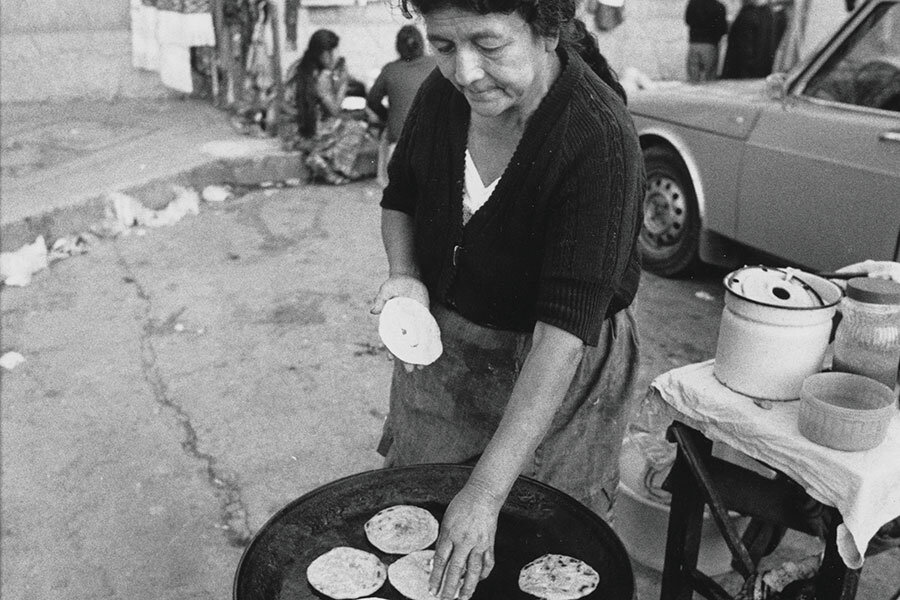A simple staple, enhanced by hunger
Loading...
“Tortillas.” The small wooden sign nailed onto a dead tree grabs my attention. I’m soaking wet from a quick-moving jungle rainstorm and am feeling just a bit sorry for myself. I’m also starving, but this small Guatemalan village has no place to grab a bite.
Our local friends have dropped us off at this village on the shores of Lago Petén Itzá. They warn us that they won’t be back for several hours, but an afternoon walking a sleepy village with nothing much to do sounds more appealing to our car-weary bodies than joining our friends on a supply run.
We’ve walked up and down the village multiple times, slow steps helping us while away the time. With one hour left before we meet up with our friends, the promise of tortillas lifts my sodden spirits.
Following a dirt path, we wind deeper into this village. One-room homes of stone and mud have no doors to keep out bad elements – of weather or humanity. We are now a mile from the heart of the village and the homes are farther and farther apart.
“Do you really think there are tortillas at the end of this road? Or are we walking into a trap in which our kidneys will be harvested?” I nervously joke to my husband. His laughter calms my fears.
Hearing the laughter, a cow peeks out of one of the doorways and moos a warning to its owner. A multigenerational family is sitting on the dirt floor of the home; their heads turn to watch us go by.
In this village, sharing your living quarters with a cow is not considered a misfortune: A cow is a prized possession, something to keep close and treat as a member of the family. I wave to the family as I pass by. An old woman waves back. Deciding we are not a threat, the other family members lose interest and turn away.
Several yards ahead stands the edge of town, dense jungle trees marking the spot where we can venture no farther. I’m about to give up on the thought of a warm tortilla when I spot another small sign in front of a minuscule wooden shack. A stout Mayan-looking woman is in the yard feeding three tiny piglets. In Spanish, my husband asks her about the tortillas. The woman shakes her head, not understanding his Spanish. She speaks Itzá, one of the 21 Mayan dialects of Guatemala. So he falls back to the international language of gestures, miming the act of patting out tortillas. Her eyes light up in understanding.
“Sylviaaaaaaaaaa!” she screams. A small girl, no older than 8, comes running from behind the house. Her mother explains, and Sylvia beckons us inside. A parrot squawks from a corner stool as we enter the dark room that serves as both kitchen and living quarters.
Sylvia gets to work. Reaching into a lye-filled pot, she pulls out a mound of cooked corn. Tossing a handful of the corn to the parrot, she then slaps the rest into a giant stone molcajete, a mortar. The parrot makes happy noises as Sylvia uses a pestle to grind the corn into a smooth paste. Gathering the paste into balls, she quickly forms the tortillas using her hands as a press.
A fire is already burning under a large sheet of iron that serves as her stove-top. Sylvia arranges the tortillas on the iron and tends to them, flipping them tenderly as the smell of charred corn fills the air. Once they turn golden and puff up, she puts them into a small bag and sprinkles on some chunky salt. In exchange for the tortillas, we hand over a few more quetzals than she is asking for as payment. Sylvia beams and waves goodbye.
Back on the dirt path, I take my first bite. My taste buds swoon with pleasure. I have found the holy grail of tortillas. Before we regain the main road, I decide that it would be a shame not to return for another batch. Despite the heavy rain that has picked up again, my husband obliges. We make our way back to Sylvia’s house.
Her mother sees us coming and begins to laugh. “Sylviaaaaaaaaaa!” she screams once more. The little girl comes running. Upon seeing us, she joins her mother in laughter, grabs my hand, pulls me inside, and starts the routine again.







